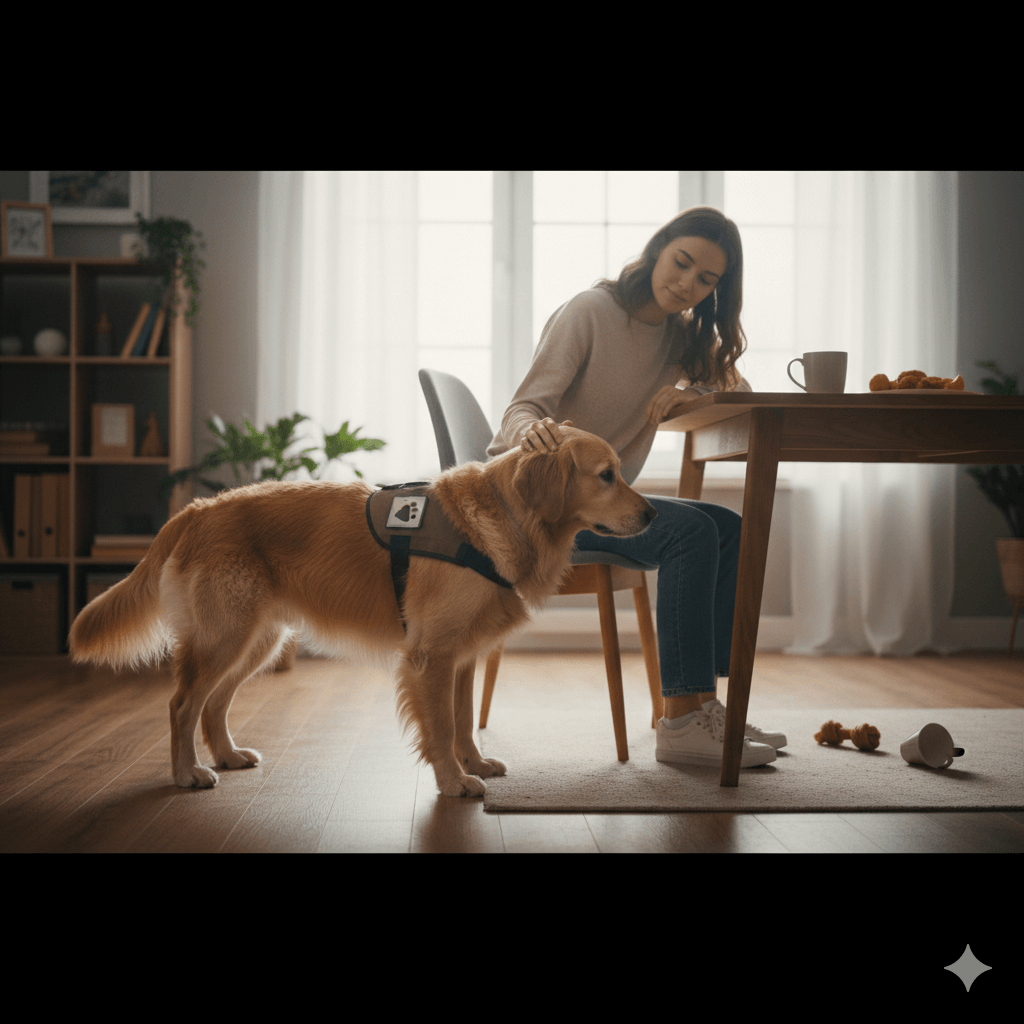How to Locate a Dog with a Chip: A Step-by-Step Guide
Losing a dog is every pet owner’s worst nightmare. The panic, the heartache, and the uncertainty can feel overwhelming. Thankfully, modern technology has given us microchips—a tiny but powerful tool that can help reunite lost dogs with their families. If your dog has been microchipped, you’ve already taken a crucial step toward ensuring their safe return. But how exactly does locating a dog with a chip work? In this blog post, we’ll walk you through everything you need to know about using a microchip to find your furry friend, from understanding how it works to taking the right steps when your dog goes missing.
Understanding Microchips: What You Need to Know
Before diving into the process of locating a dog with a chip, it’s essential to understand what a microchip is and how it functions. These small devices are more than just a piece of technology—they’re a lifeline for lost pets. Here’s a breakdown of the basics:
A microchip is a tiny electronic device, about the size of a grain of rice, implanted under your dog’s skin.
It contains a unique identification number that is linked to your contact information in a pet registry database.
Microchips do not have GPS capabilities; they rely on being scanned by a specialized microchip reader.
Most veterinarians, shelters, and animal control officers are equipped with scanners to check for microchips in stray animals.
The procedure for implanting a microchip is quick, safe, and relatively painless, similar to a routine vaccination.
Understanding how microchips work ensures you know what to expect and can take full advantage of this technology if your dog ever goes missing. While microchips don’t guarantee instant recovery, they significantly increase the chances of being reunited with your pet.
Steps to Take When Your Dog Goes Missing
If your dog has gone missing, staying calm and taking immediate action is key. With a microchip in place, you have a powerful tool at your disposal—but it’s up to you to ensure it’s used effectively. Follow these steps to locate your dog with a chip:
Contact local animal shelters, rescue organizations, and veterinary clinics to report your dog as missing. Provide them with your dog’s microchip number.
File a report with animal control in your area and ask them to keep an eye out for your pet.
Spread the word by posting on social media platforms and community groups with a clear description and photo of your dog.
Create physical flyers with your dog’s photo, description, and your contact information, and distribute them around your neighborhood.
Visit nearby areas where your dog might have wandered, calling their name and leaving familiar scents like clothing or toys.
Acting quickly and efficiently increases the likelihood of recovering your dog. Remember, a microchip is only effective if someone finds your dog and scans it—so spreading awareness is critical.
Check this guide 👉Reasons Not to Microchip Your Dog: Best 7 Expert Tips!
Check this guide 👉How Much Does It Cost to Microchip a Dog? Best 7 Tips!

What to Do If Your Dog Is Lost | Common Mistakes to Avoid |
|---|---|
Contact local shelters and vets | Waiting too long to start searching |
Post on social media and community boards | Assuming the microchip will do all the work |
Create and distribute flyers | Not updating your microchip registry info |
Visit nearby areas and call your dog | Ignoring local animal control resources |
File a missing pet report | Failing to notify neighbors and friends |
How to Check and Update Your Dog’s Microchip Information
A microchip is only as useful as the information linked to it. If your contact details are outdated, it becomes much harder for shelters or veterinarians to reach you. Here’s how to ensure your dog’s microchip is ready to help in an emergency:
Locate your dog’s microchip number, which is usually provided after the implantation or during vet visits.
Contact the microchip manufacturer or registry to confirm your contact information is accurate and up-to-date.
Add multiple forms of contact, such as a phone number and email address, to increase the chances of being reached.
Notify the registry if you move, change your phone number, or experience any other life changes.
Regularly test the microchip by asking your veterinarian to scan it during routine check-ups.
Keeping your dog’s microchip information current ensures it serves its purpose when you need it most. A little maintenance can make a world of difference in a crisis.
The Role of Veterinarians and Shelters in Locating Lost Dogs
Veterinarians and shelters play a vital role in reuniting lost dogs with their owners. Their expertise and resources are often the key to a successful recovery. Here’s how they contribute to locating a dog with a chip:
Shelters routinely scan every stray animal brought in to check for a microchip.
Veterinarians assist by scanning found dogs and contacting the microchip registry to locate the owner.
Many shelters and clinics maintain databases of lost and found pets to cross-reference information.
Staff members are trained to handle microchip-related inquiries and guide pet owners through the recovery process.
Some organizations offer free microchip scanning events to help reunite lost pets with their families.
These institutions are invaluable allies in the search for your dog. Building relationships with local shelters and vets can expedite the process if your dog ever goes missing.
Proactive Measures to Keep Your Dog Safe
While microchips are a fantastic safety net, preventing your dog from getting lost in the first place is always the best approach. Taking proactive steps can significantly reduce the risk of your dog wandering off or going missing. Here are some practical tips to keep your furry friend safe:
Always keep your dog on a leash during walks, especially in unfamiliar or crowded areas.
Secure your yard with a sturdy fence and ensure there are no gaps or weak spots where your dog could escape.
Teach your dog basic commands like “come,” “stay,” and “leave it” to maintain control in potentially dangerous situations.
Use ID tags with up-to-date contact information as an additional layer of identification alongside the microchip.
Supervise your dog closely when they’re outside, particularly if they’re prone to exploring or chasing after things.
By implementing these preventive measures, you can minimize the chances of your dog getting lost and ensure they stay safe and sound. Prevention is always better than dealing with the stress of a missing pet.
Guiding Good Samaritans to Reunite Your Dog with You
If someone finds your lost dog, their actions can make all the difference in reuniting your pet with you quickly. Educating others about what to do when they find a lost dog can help streamline the process. Here’s what a Good Samaritan should do if they encounter your microchipped dog:
Calmly approach the dog and check for an ID tag with contact information.
Take the dog to a nearby veterinarian or shelter to have them scanned for a microchip.
Contact the microchip registry using the information provided after scanning the chip.
Post about the found dog on social media and local community boards to reach the owner faster.
Keep the dog safe and comfortable until the owner or authorities arrive to claim them.
When people know how to handle finding a lost dog, it increases the chances of a swift reunion. Encourage your friends, family, and neighbors to be informed and ready to help.
Coping with the Stress of a Missing Dog
Losing a dog can be an emotionally draining experience, and it’s important to take care of yourself while searching for your pet. Managing stress and staying positive can help you stay focused and effective during the search. Here are some ways to cope emotionally:
Lean on friends, family, or support groups who understand what you’re going through and can offer encouragement.
Take breaks during the search to rest and recharge—burning out won’t help you or your dog.
Practice mindfulness techniques like deep breathing or meditation to manage anxiety and stay calm.
Celebrate small victories, such as receiving leads or hearing that someone has spotted your dog.
Remind yourself that many lost dogs are reunited with their owners thanks to microchips and persistence.
Taking care of your emotional well-being ensures you can continue searching with clarity and determination. Stay hopeful—your efforts will pay off, and your dog will come home.
Frequently Asked Questions About Locating a Dog with a Chip
How does a microchip help locate a lost dog?
A microchip contains a unique ID number linked to your contact information in a registry, allowing shelters and vets to identify your dog.
Can I track my dog’s location using a microchip?
No, microchips do not have GPS capabilities. They must be scanned by a specialized reader to access the chip’s information.
What should I do if my dog’s microchip isn’t working?
Contact the microchip manufacturer immediately to resolve any issues and ensure the chip is functioning properly.
How long does it take to locate a dog with a chip?
The time varies depending on who finds your dog and how quickly they scan the chip and contact you.
Do I need to register my dog’s microchip?
Yes, registration is essential to link the chip to your contact information. Without it, the chip is useless.
Final Thoughts: Be Prepared, Stay Hopeful
While losing a dog is a heart-wrenching experience, having a microchip in place gives you a powerful tool to bring them back safely. By understanding how microchips work, keeping your information updated, and acting swiftly when your dog goes missing, you can maximize the chances of a happy reunion. Remember, preparation is key—regularly check your dog’s microchip, build relationships with local shelters and vets, and always have a plan in place. With patience, persistence, and the right resources, you and your furry friend can overcome even the toughest challenges together.
Understanding Bone Supplement for Cats: Best 7 Expert Tips! – Safe, vet-approved guidance for strong feline bones & balanced nutrition.
Bone Supplement for Dogs: Best 7 Expert Tips! – Expert guide to calcium, collagen & bone health for every life stage.
Understanding Can Cats Get Sunburn: Best 7 Expert Tips! – Protect your feline from UV damage with vet-backed prevention strategies.
How to Train a Seizure Alert Dog: Best 7 Expert Tips! – Learn expert-backed steps to nurture natural instincts into reliable, life-saving seizure alerts.





